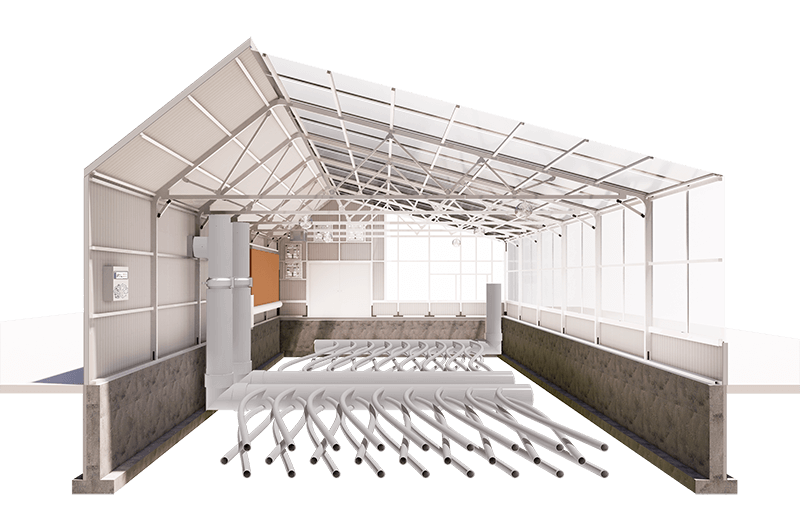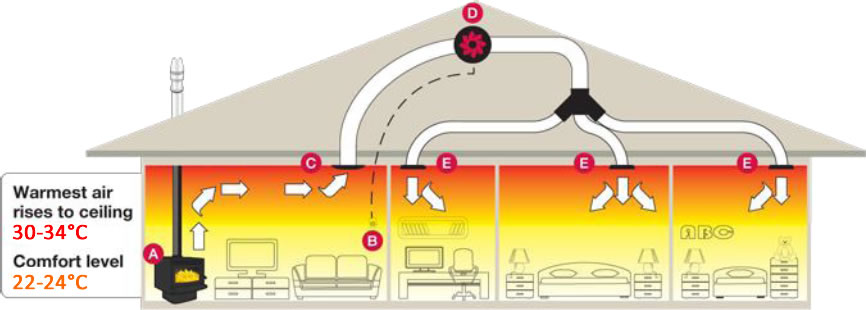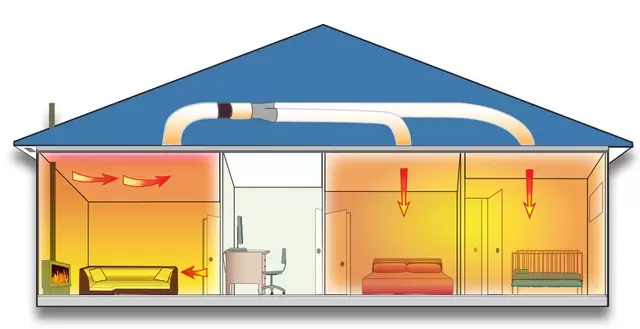How DVS Heat Transfer Systems Are Making Phase Change Materials More Efficient Than Ever
A Comprehensive Guide to Choosing the Right Heat Transfer Equipments for Your Needs
Choosing the appropriate Heat transfer system is essential for operational effectiveness. Various systems deal with different needs, affected by factors such as temperature array and fluid type. Recognizing the principles behind Heat transfer, such as conduction, radiation, and convection, is crucial. Furthermore, examining power resources and maintenance practices can impact long-term performance. A closer exam of these considerations discloses just how to tailor a system to specific demands. What should one prioritize in this complex decision-making procedure?
Understanding Heat Transfer: Trick Concepts and Principles
Heat transfer may seem like an uncomplicated concept, it encompasses a variety of concepts that are basic for efficient system design - DVS Heat Transfer Systems. Understanding these principles is crucial for developers and designers who intend to enhance thermal efficiency in different applications. Transmission, for example, entails the transfer of Heat with solid products, while convection refers to the motion of Heat within fluids. Radiation, another vital principle, explains just how Heat can be moved via electromagnetic waves. Each of these mechanisms plays a vital function in determining just how energy relocates within a system. By extensively comprehending these principles, experts can make enlightened choices, guaranteeing that Heat transfer systems run effectively and meet the particular needs of their applications
Types of Heat Transfer Systems: An Introduction
Recognizing the principles of Heat transfer prepares for exploring the various kinds of Heat transfer systems available. Heat transfer systems can be categorized primarily right into three types: radiation, transmission, and convection. Transmission entails Heat transfer with strong materials, depending on straight contact between particles. Convection, on the various other hand, happens in liquids (gases and liquids) where the movement of the fluid itself assists in Heat transfer. Radiation involves the transfer of Heat with electro-magnetic waves and does not need a medium, allowing it to happen in a vacuum cleaner. Each type of system has distinctive characteristics and applications, making it necessary for individuals and companies to thoroughly assess their particular needs when selecting one of the most ideal Heat transfer service.
Applications of Heat Transfer Systems in Numerous Industries
Heat transfer systems play a crucial function across numerous industries, influencing performance and product top quality. In commercial production procedures, they help with exact temperature control, while in food and beverage processing, they guarantee safety and preservation. Furthermore, HVAC and environment control systems count heavily on reliable Heat transfer to maintain comfy atmospheres.
Industrial Manufacturing Processes

Countless commercial production procedures depend greatly on effective Heat transfer systems to make best use of efficiency and improve product high quality. In industries such as metalworking, Heat exchangers play a crucial duty in keeping perfect temperatures throughout welding, casting, and building. These systems ensure uniform Heat distribution, which is important for accomplishing preferred material homes. Likewise, in the chemical manufacturing industry, Heat transfer systems assist in exact temperature control during responses, affecting return and safety. In fabric production, effective Heat administration is vital for coloring and completing procedures, affecting shade uniformity and fabric high quality. By selecting ideal Heat transfer innovations, producers can boost power effectiveness and minimize functional costs, inevitably bring about a much more sustainable and competitive production setting.
Food and Drink Handling
Efficient Heat transfer systems are equally essential in the food and drink processing market, where maintaining optimal temperatures is critical for food safety and security and quality. These systems play a necessary role in procedures such as sanitation, food preparation, and pasteurization, making certain that products are safe for usage and maintain their nutritional value. Heat exchangers, as an example, effectively transfer Heat between liquids, enhancing power usage while decreasing temperature level changes. In addition, refrigeration systems are basic for protecting subject to spoiling things and extending shelf life. The option of Heat transfer innovation straight impacts operational performance and item stability, making it vital for food and drink producers to pick the ideal systems customized to their specific processing demands. This mindful option inevitably contributes to customer complete satisfaction and food security.

A/c and Environment Control
While numerous sectors depend on Heat transfer systems for effectiveness, COOLING AND HEATING (Home Heating, Air Flow, and A/c) plays an important role in keeping indoor climate control across various settings. These systems make use of Heat transfer principles to regulate air, humidity, and temperature level top quality, making sure convenience and safety in household, commercial, and industrial environments. Appropriately designed HVAC systems enhance power efficiency, minimize functional expenses, and lessen environmental effect. In industrial structures, for example, efficient climate control contributes to staff member productivity and customer fulfillment. In industrial applications, cooling and heating systems help maintain optimal conditions for equipment operation and product conservation. Picking the ideal Heat transfer system is crucial for conference details climate control requirements and attaining general system efficiency.
Examining Energy Resources for Heat Transfer Solutions
In reviewing power resources for Heat transfer systems, a contrast of renewable resource options and nonrenewable fuel source considerations is crucial. Eco-friendly resources, such as solar and wind, offer lasting options that can decrease environmental influence. Conversely, nonrenewable fuel sources continue to be common because of their recognized infrastructure and energy thickness, prompting a mindful assessment of both choices.
Renewable Energy Options

Nonrenewable Fuel Source Considerations
Examining fossil fuel considerations is crucial for the effectiveness and sustainability of Heat transfer systems. Fossil gas, such as natural gas, oil, and coal, are conventional power sources that supply significant Heat output, making them preferred selections for household and industrial applications. Nonetheless, their ecological impact, consisting of greenhouse gas discharges and source exhaustion, raises concerns. When choosing a heat transfer system, it is essential to evaluate the schedule, expense, and regulative factors related to these gas. Additionally, the efficiency of fossil gas systems have to be thought about, as greater effectiveness can alleviate some environmental drawbacks. Ultimately, a well balanced approach weighing performance and sustainability can lead decision-makers towards one of the most appropriate Heat transfer service for their particular demands.
Aspects to Consider When Choosing a Heat Transfer System
Picking an ideal Heat transfer system needs careful site link consideration of numerous elements that can significantly affect performance and efficiency. One essential aspect is the operating temperature variety, which dictates the materials and design appropriate for the application. Additionally, the kind of liquid used in the system-- whether gas or liquid-- impacts Heat transfer effectiveness and compatibility. The system's dimension and capability should line up with the particular needs of the operation to avoid inefficiencies. Energy resource schedule is additionally essential, affecting operating expense and sustainability. In addition, the installment atmosphere, consisting of room constraints and ease of access for upkeep, plays a considerable function in system option. Lastly, regulatory compliance and safety requirements must be considered to assure the system satisfies get more all legal needs.
Maintenance and Efficiency Optimization for Heat Transfer Solutions
Maintaining Heat transfer systems is vital for making sure maximum efficiency and longevity. Regular upkeep tasks, such as cleaning up Heat exchangers and checking insulation, help protect against efficiency losses because of fouling and thermal bridging. In addition, keeping track of system criteria, including pressure and temperature level, enables early discovery of abnormalities, reducing downtime and costly repair work. Executing a preventive maintenance schedule can optimize efficiency and prolong the life-span of elements. Upgrading to innovative control systems can boost functional performance by readjusting to differing tons and problems. By focusing on upkeep and performance optimization, drivers can attain minimized power consumption, reduced operational costs, and enhanced overall system dependability, inevitably causing better resource use and an extra sustainable operation.
Future Patterns in Heat Transfer Technologies
As you could try this out markets significantly focus on sustainability and power performance, future trends in Heat transfer technologies are set to undergo significant makeovers. Innovations such as advanced products, including carbon nanotubes and nanofluids, promise boosted thermal conductivity and performance. In addition, the integration of renewable resource sources into Heat transfer systems is gaining momentum, promoting environmentally friendly options. Smart technologies, including IoT sensing units, are anticipated to transform monitoring and control, making it possible for real-time information analysis for optimized efficiency. The advancement of modular and small systems will certainly assist in simpler installment and maintenance, providing to diverse applications. These advancements suggest a change in the direction of even more sustainable, efficient, and adaptable Heat transfer remedies, straightening with worldwide power objectives and environmental criteria.
Often Asked Inquiries
What Are the Ecological Impacts of Heat Transfer Equipments?
The environmental effects of Heat transfer systems can consist of greenhouse gas emissions, power usage, and potential thermal air pollution. Additionally, improper disposal of inefficiencies and materials can add to resource exhaustion and community interruption.
Just how Do I Determine the Cost-Effectiveness of a Warm Transfer System?
To compute the cost-effectiveness of a warmth transfer system, one need to evaluate preliminary costs, functional expenses, upkeep requirements, and energy performance, comparing these elements against the expected life-span and efficiency of the system.
Can Heat Transfer Equipment Be Utilized in Residential Settings?
Heat transfer systems can certainly be made use of in household settings. They offer efficient home heating and cooling solutions, making homes extra comfy while possibly reducing energy expenses. Their adaptability permits different applications in property atmospheres.
What Safety Laws Apply to Heat Transfer Systems?
Safety regulations for Heat transfer systems commonly consist of standards on procedure, installation, and maintenance. Conformity with neighborhood building regulations, supplier requirements, and industry standards is necessary to assure effective and safe system performance in different applications.
Exactly How Do Different Products Affect Heat Transfer Effectiveness?

Transmission, for instance, involves the transfer of Heat through solid materials, while convection refers to the motion of Heat within liquids. Comprehending the principles of Heat transfer lays the groundwork for exploring the different kinds of Heat transfer systems readily available. Heat exchangers, for instance, efficiently transfer Heat in between fluids, enhancing power usage while decreasing temperature level variations. In assessing power sources for Heat transfer systems, a comparison of eco-friendly power alternatives and fossil gas considerations is vital. Metals, such as copper and aluminum, conduct Heat successfully, whereas insulators like rubber and glass slow down Heat circulation.